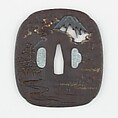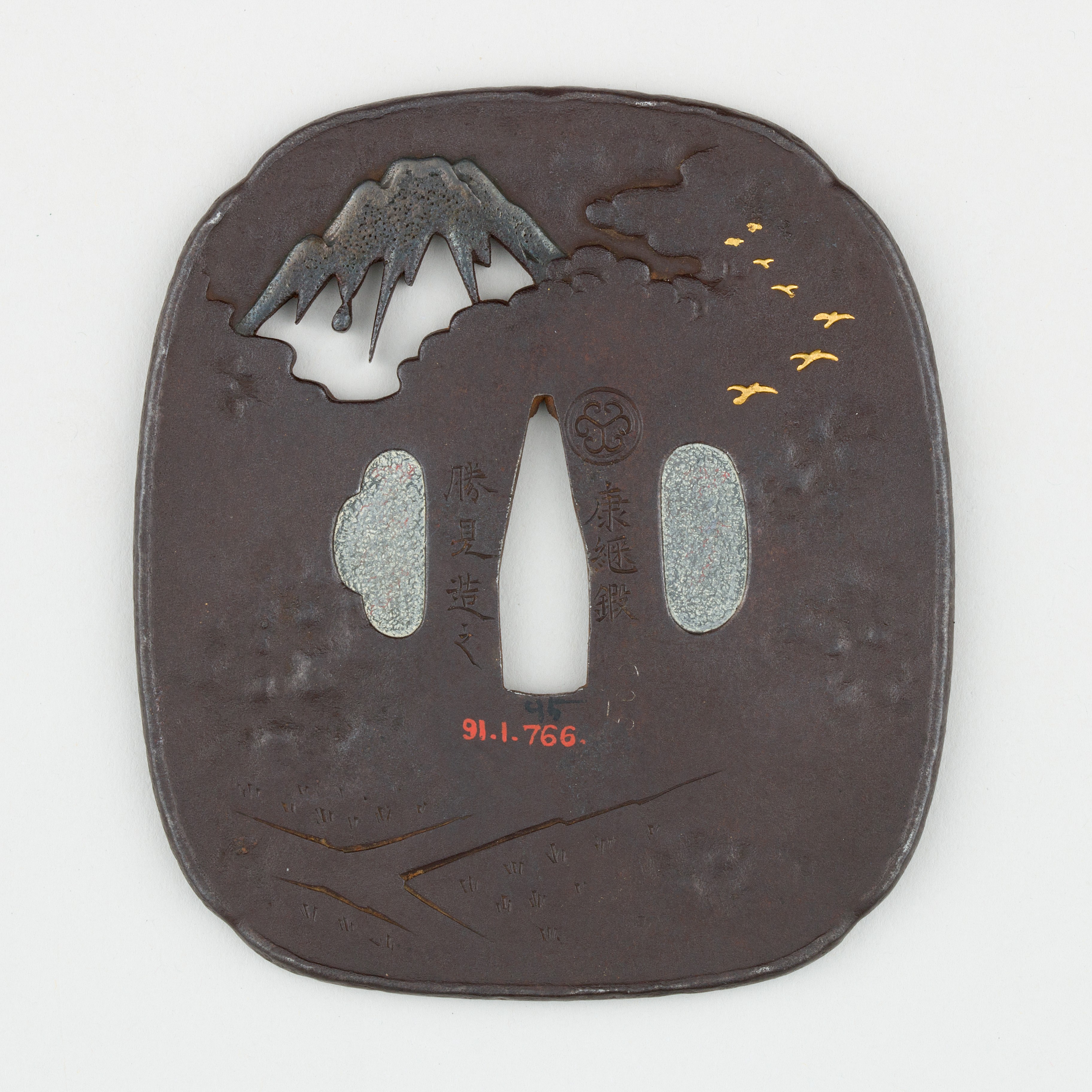Sword Guard (Tsuba) Depicting The Pine Grove at Miho (三保松原図鐔)
Not on view
This tsuba depicts the Pine Grove at Miho (Japanese: Miho no Matsubara), a scenic area on the Miho Peninsula renowned for its seashore with pine trees, seen on the right of the obverse, and view of Mt. Fuji, which is depicted peeking from behind clouds, using openwork for the mountain flanks and a shibuichi for the snow cover. The Pine Grove at Miho is also known as the site of the legend of Hagoromo (羽衣, "The Feathered Robe"), which is based on the traditional swan maiden motif. The reverse shows engravings of rice paddies and flying wild geese highlighted in gold.
The artist Katsumi (勝見) was born in Edo in Bunsei twelve (文政, 1829) as son of a fish wholsesaler. When he was eight years old he apprenticed as a painter with the Kanō master Baiken Kazunobu (梅軒員信, 1815‐1863) and at age twelve, he went to train as a sword fittings maker with master Tanaka Tōryūsai Kiyotoshi (田中東龍斎清寿, 1804-1876) by whom he was adopted in the first year of Kōka (弘化, 1844). However, he fell from grace with his master because of his forgeries and so he was prohibited from using the school name Tōryūsai and his adoption was later cancelled. Katsumi then married into the Itō (伊藤) family which he took over in Man’en one (万延, 1860) as its 10th generation under the name Masataka (正隆). He died on the 24th day of the second month of Meiji 43 (明治, 1910) at the age of 82.
Taking into consideration Katsumi’s active period and the way the characer for tsugu is signed, the ground plate was most likely forged by the 11th Edo-Yasutsugu generation.
This image cannot be enlarged, viewed at full screen, or downloaded.
This artwork is meant to be viewed from right to left. Scroll left to view more.



